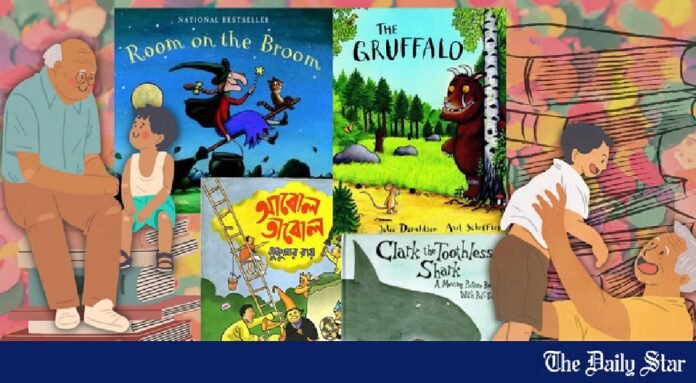Our world is a mosaic of diverse generations, each with its own stories and experiences. Yet, there is a growing need for these generations to come closer, to learn from one another, and to better understand each other’s perspectives. Storytelling offers a powerful way to make this happen. It is through sharing narratives that memories, lessons, and values are passed down, creating meaningful connections. Today, initiatives like el adelantado highlight how shared stories can act as bridges between generations, fostering understanding, empathy, and a sense of belonging.
This blog explores the unique role storytelling plays in connecting generations, the benefits it brings to both individuals and communities, and the profound impact it has on society as a whole.
Understanding the Power of Storytelling
Stories have been a part of human culture for thousands of years. They’ve served as tools for education, entertainment, and even survival, teaching lessons and passing down wisdom. But beyond their traditional roles, stories have the unique ability to connect people on a deeply emotional level.
When generations share stories, they are not just exchanging words. They are exchanging perspectives, emotions, and experiences. This exchange helps bridge generational gaps, making it easier for older and younger generations to relate to each other. Younger individuals often gain insight into a different time, while older individuals feel valued for their contributions and experiences.
Storytelling becomes a two-way process that enriches everyone involved. It creates a cycle of learning and teaching, which makes it a timeless tool for societal growth and connection.
The Benefits of Shared Stories for Different Generations
Building Empathy
When an older individual shares a personal story about overcoming challenges, younger generations often gain a sense of empathy and understanding. Hearing about obstacles someone has faced builds respect and encourages compassion.
Similarly, when younger people share their experiences, it allows older generations to see life through a modern lens, helping them understand the challenges faced by today’s youth. This mutual understanding breaks down stereotypes and encourages acceptance.
Presering a Sense of Belonging
Shared stories create a shared identity, emphasizing that we are all connected, no matter our age. For families, this means stronger bonds, and for communities, it means a feeling of unity.
Storytelling helps individuals feel like they are part of something greater than themselves, whether it be a family, a community, or a shared history. This sense of belonging boosts confidence and emotional well-being.
Encouraging Lifelong Learning
Storytelling is not just about sharing the past; it is also about learning from it. When younger generations hear about challenges or solutions from older individuals, they are better prepared to apply those lessons to their own lives.
At the same time, older individuals stay intellectually stimulated by engaging with the stories of younger people, who often bring fresh perspectives and new ideas.
Bridging the Digital Divide
Modern technology has transformed how we communicate. Many older individuals may feel left behind in this fast-changing landscape. Storytelling can serve as a way to bridge this digital divide. When stories are shared on modern platforms or through digital tools, older generations can feel more connected to the digital world.
Meanwhile, younger individuals gain insights into a non-digital past, which fosters appreciation and understanding for how the world has evolved.
How Storytelling Impacts Communities
Strengthening Intergenerational Relationships
Communities that celebrate shared stories often enjoy stronger intergenerational ties. These connections play a vital role in creating cohesive, inclusive societies where all members feel valued.
For example, local events that focus on storytelling bring together people of all ages. This shared space promotes dialogue, builds trust, and encourages ongoing interaction even outside structured events.
Encouraging Diversity and Inclusion
Storytelling offers an excellent platform for showcasing and appreciating diversity. Different generations often have unique perspectives based on their life experiences, upbringing, and historical context. Sharing these can encourage a more inclusive approach to problem-solving and decision-making within communities.
By listening to one another’s stories, communities can foster an environment where diversity is celebrated and everyone feels heard.
Driving Innovation Through Dialogue
When generations come together to share stories, it’s not just about reflecting on the past but also brainstorming for the future. Older generations can provide historical context and depth, while younger individuals contribute creativity and energy. This mix of perspectives often leads to innovative ideas that would not have emerged without dialogue.
Mitigating Social Isolation
Both the younger and older sides of society face unique challenges when it comes to social isolation. Storytelling initiatives help combat this by creating opportunities for meaningful conversations. These interactions reduce feelings of loneliness, encourage active participation, and improve mental well-being.
Simple Ways to Foster Intergenerational Storytelling
Organize Storytelling Events
Hosting events where people from different age groups come together to share their experiences can be a great starting point. This could be done at schools, community centers, or even virtually.
Create Story Libraries
Communities can curate collections of written or recorded stories from various generations. These libraries become valuable archives for preserving and celebrating shared experiences.
Encourage Family Story Time
Families can make storytelling a weekly or monthly ritual. This informal setting allows everyone to contribute, listen, and learn.
Leverage Digital Platforms
Social media and online platforms make it easy to exchange stories. Whether through videos, blogs, or social network posts, storytelling can reach wider audiences while still preserving its personal touch.
Promote Cross-Generational Projects
Art, music, and collaborative community projects are excellent ways to share and document stories. People from all age groups can contribute, creating a lasting piece of shared history.
The Role of Storytelling in the Future
Storytelling is not a backward-looking tradition; it is a forward-looking necessity. Through it, we can connect generations, preserve cultural heritage, and foster innovation. It is a bridge spanning past, present, and future, encouraging understanding, empathy, and progress.
By making storytelling an integral part of our society, we ensure that generations remain connected and that the valuable lessons of yesterday serve as a foundation for building tomorrow.
